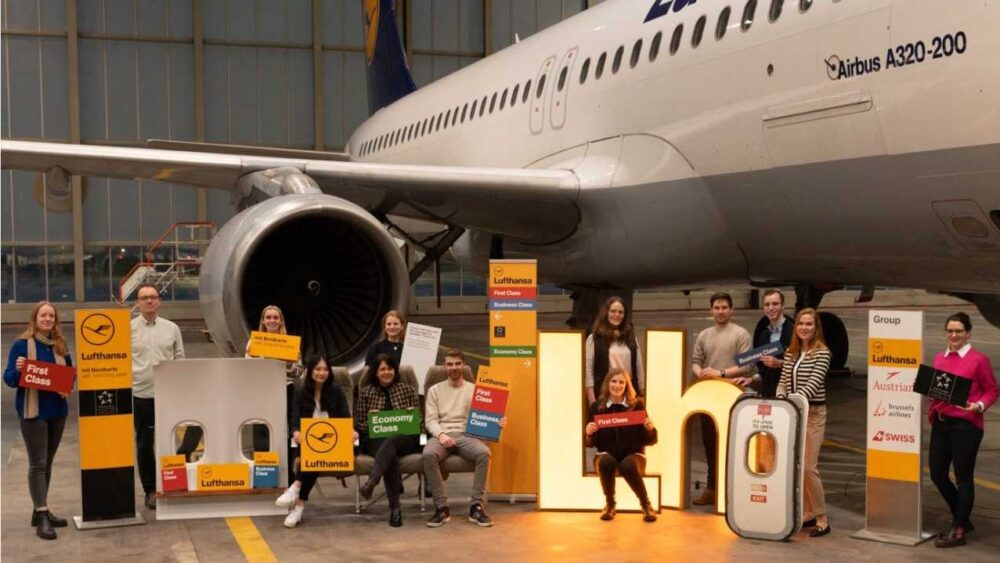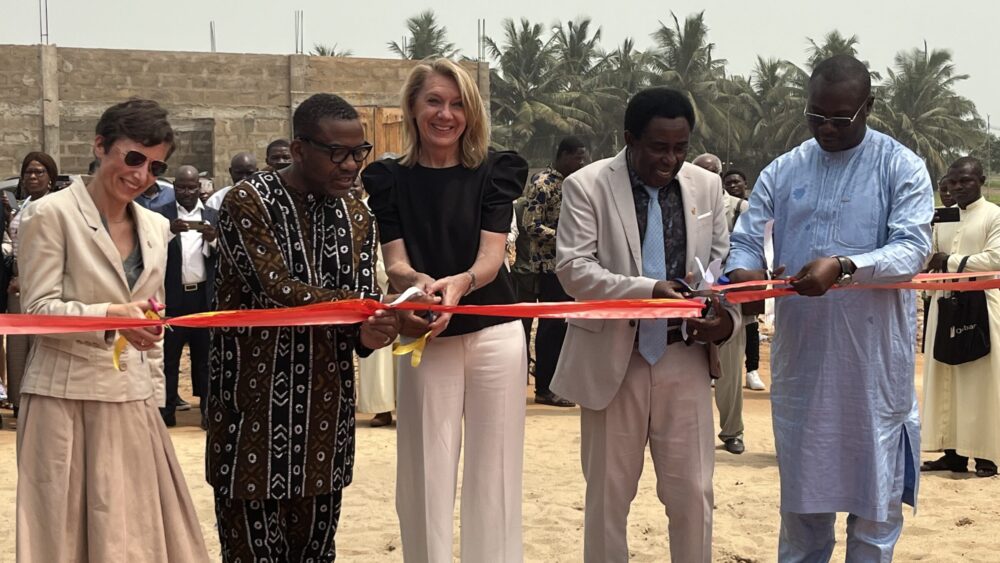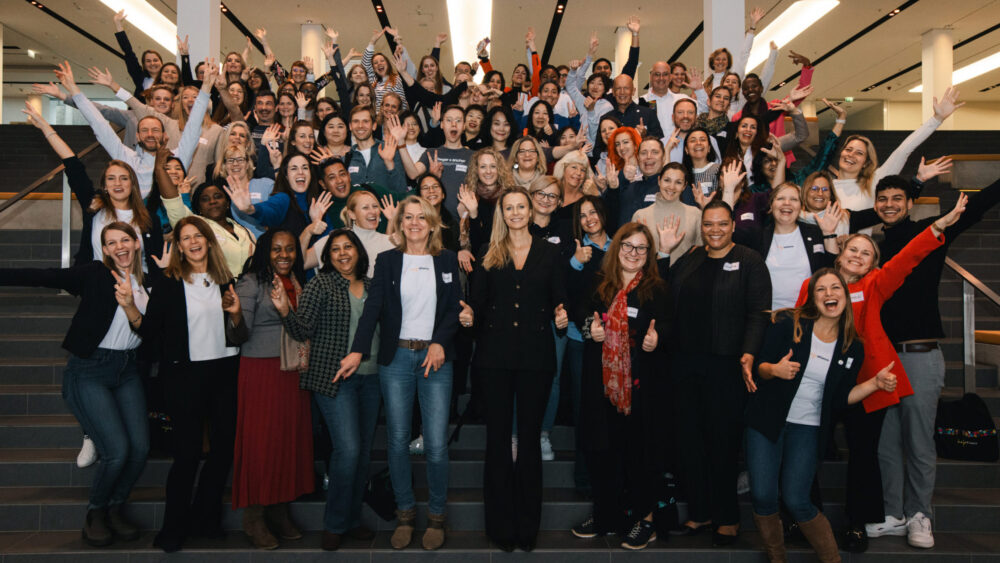
A small plant in the desert sand
help alliance patron Vivian Spohr visits the Azraq catch-up school in Jordan
The dead straight road from Amman stretches across 100 kilometres through the desert towards Saudi Arabia. There is nothing but sand, pebbles and endless space, with only the blue sky above and the hazy horizon in the distance. After a good two-hour drive from the Jordanian capital, a huge camp suddenly appears with thousands of metal huts as far as the eye can see with their roofs brightly lit by the sun’s glare and between them water tanks and fences, gates and barriers. Around 40,000 refugees who have fled from the Syrian civil war live here, in the middle of nowhere. The consequences of the largest refugee movement since the end of the Second World War are clear to see. The people living in the camp have lost everything: family members and friends, neighbours, their homes, all their belongings. There is only one thing they cling onto – the hope of one day returning to their roots, to Homs and Aleppo, Palmyra and Damascus – their homeland.
Officially, there are 600,000 Syrian refugees here, who have fled to Jordan from the civil war and who have been registered by UNHCR, the United Nations High Commission for Refugees. The national statistics agency estimates that around 1.2 million Syrian refugees as well as 300,000 Iraqis are currently in the Kingdom of Jordan but unofficial sources say there are as many as three million who have sought refuge in their neighbouring country. Although Jordan has taken in refugees, including hundreds of thousands of Palestinians, during times of war and conflict since the late 1940s, the current scale of the wave of refugees has long since exhausted the country’s capacities with its 6.5 million inhabitants, meaning Jordan is suffering, too.
The United Nations is under obligation, numerous large organisations are providing support, and yet there is still a lack of help across the board. In the refugee camps, of which there are more than a dozen, people are given a roof over their heads, food and basic medical attention. There are schools for children and young people, and there are attempts to provide people with meaningful occupation. Their basic needs are catered for, but they are faced with a gruelling wait for something to happen. People there are traumatised by their experiences of war and escape and despair about their uncertain future.
Sometimes it is the small, unassuming images and moments that speak for themselves, for example the young couple sitting here on a bench in the Azraq camp holding a small, sick baby. The parents sit here in desperation looking crushed – a young family in the midst of 40,000 people and yet still all alone. A silent appeal to the world community as Jordan’s Queen Rania said during a recent visit to Berlin: “We cannot get enough of connectivity, but what about our interpersonal relationships? Our world has grown together, but our global family is drifting apart in an alarming way.”
Since last year, help alliance has been working on interpersonal relationships with their project, the Azraq catch-up school. The eponymous town of Azraq is located just under thirty minutes’ drive from the refugee camp. Some 4,000 children and young people live in this inhospitable area beyond the fence of the large refugee camp. They have left the camp to find social contacts and structure for their everyday lives in an environment where nothing is normal.
The local population is attempting to alleviate the suffering of these people in light of their traumatic experiences and exhausting escape and to provide a temporary home to the refugees living in the region but schools and educational facilities in particular are hopelessly overcrowded.
The road leads up a small hill in Azraq where three containers, classrooms in tiny spaces, stand side by side on a small, sandy square. They are equipped with the absolute basics, but they are functional. The Help Alliance logo has been sprayed onto one of the containers with fresh paint, a yet unfinished rainbow promises hope. Cheerful children’s voices can be heard from the classrooms.
“Thanks to the Azraq catch-up school, around 100 refugee children are being given an education, who would otherwise not find a place at a public school or who would fail to make friends due to their very long escape,” says project leader Christine Loos. The dedicated Lufthansa employee works part-time at the Frankfurt base, but has been living in Amman with her husband for eight years and thus knows where concrete support is needed – a proverbial drop in the ocean, but a drop nonetheless.
Here in the Azraq catch-up school, Syrian refugee children aged between 6 and 15 learn the basics of the Syrian and Jordanian educational curriculum. “It is not yet clear which school system the children will be following in future. This way, they have parallel opportunities, both here Jordan and back home in Syria,” explains Christine Loos. Help Alliance also funds three teachers, healthy meals are provided and the children are taught basics of everyday life, such as dental hygiene.
“The project is a fragile little plant but it is working,” says Vivian Spohr, patron of help alliance, during her visit to Azraq where she is surrounded by dozens of children in the sandy schoolyard. The container funded by help alliance, which serves as a classroom for 35 children, is currently being painted. Local representatives have turned up to proudly show their regards to the German visitor.
“One could despair in light of the scale of this human catastrophe and the suffering that these children have been and are going through,” said Vivian Spohr. “It is therefore all the more important that we provide help and at least give these young people access to education, to give them structure, to stabilise them and to help them take a first step towards a self-determined life.” The children’s bright eyes, their curiosity and openness shows that the project is on a good path. “Together with the local partners, the Azraq Woman Association and helping refugees in Jordan/Mercy Corps, we would like to make a contribution and help these children to find their way back to normality in their everyday lives,” said the patron of help alliance.
“What matters is that we are doing something meaningful in this region where the most pressing and obvious problems lie,” says Tamur Goudarzi-Pour, Vice President Sales & Services Middle East & Africa. Alongside the refugee projects in Germany, it is a very good and important approach to engage in suitable projects in countries along the refugee route, too. “Here, we can show our responsibility everyday as companies vis-à-vis society.”
Back in Amman – at a visit to the UNHCR. Their representative, Paul Stromberg, bluntly outlines the situation of the refugees. Millions of Syrians have left the country, more than half of the remaining population is fleeing within the country borders and hundreds of thousands are enduring no man’s land between Syria and Jordan. Cities such as Aleppo and Homs have been razed to the ground. Despair? Give up due to the hopelessness of the situation? “No,” says Paul Stromberg, ”make use of your opportunity to help – doing something is always better than doing nothing.” A fragile little plant in the desert sand, which is continuing to grow and prosper.



